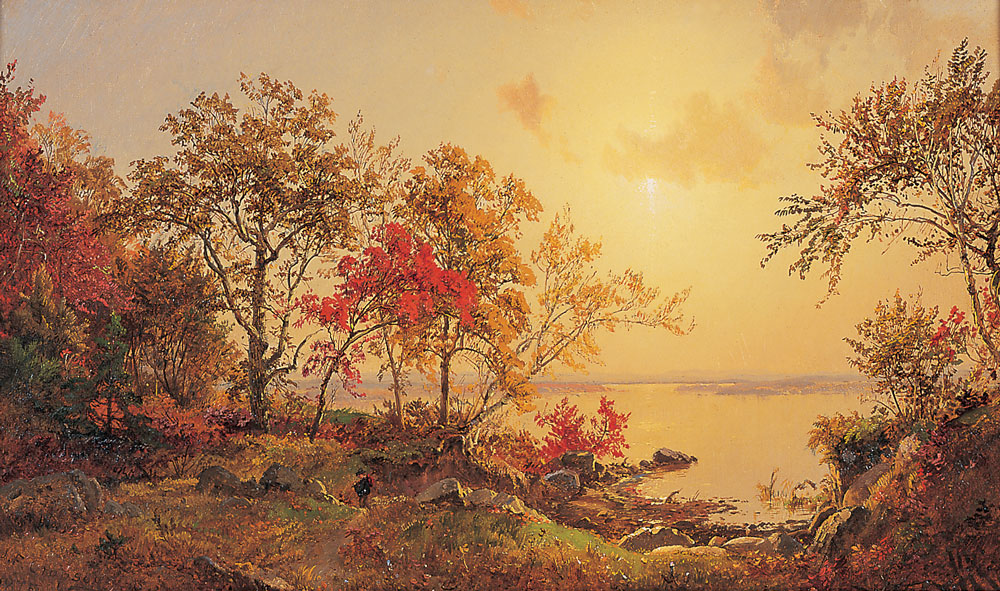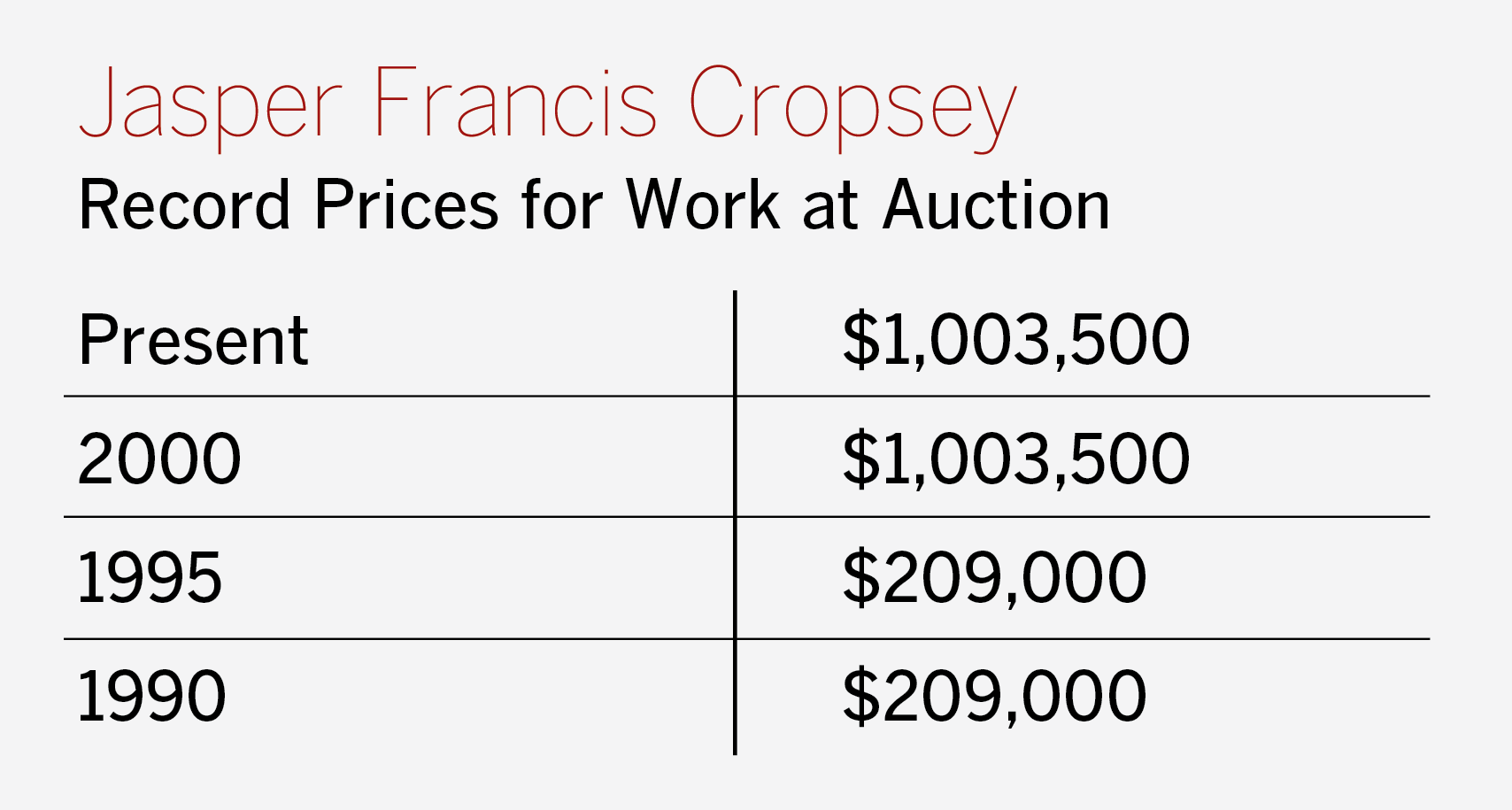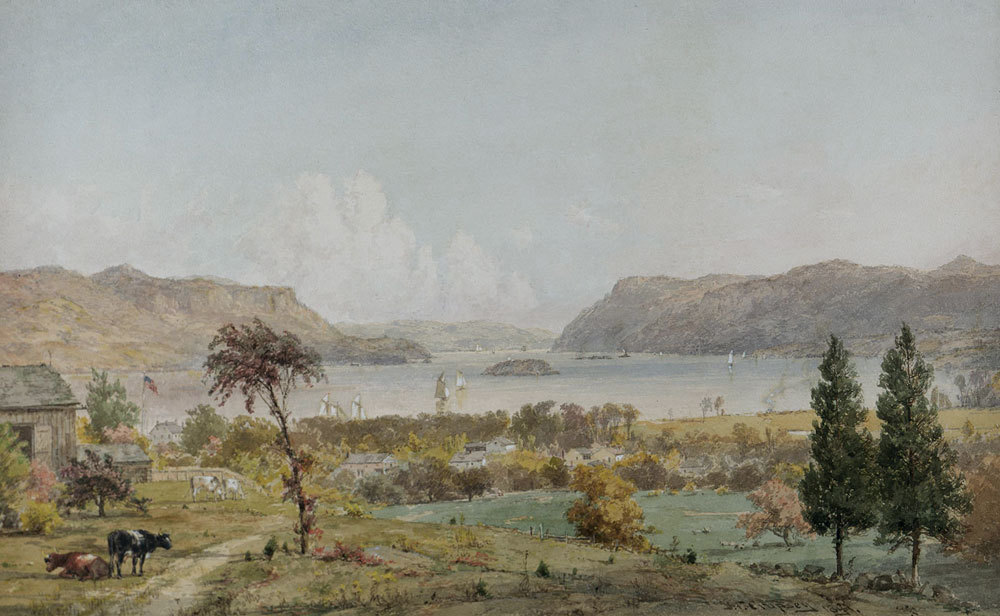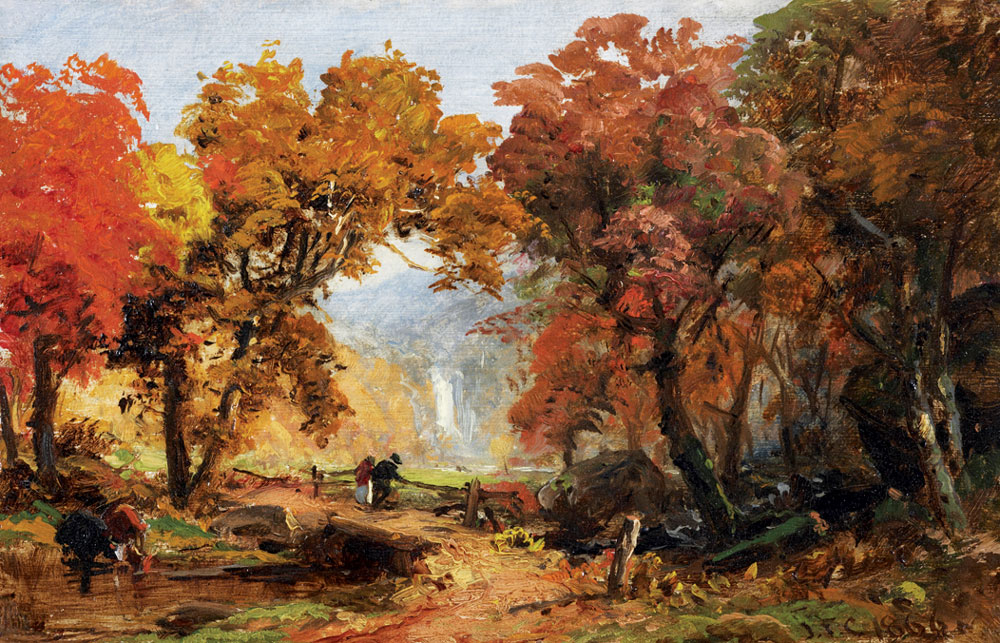Jasper Francis Cropsey
Though best known for his resplendent autumn scenes (Fig. 1), Jasper Francis Cropsey pursued a wide range of subjects over the course of his long and productive career and was among the pioneers of the American watercolor movement. The steadily increasing demand for Cropsey’s work in the marketplace—along with growing scholarly interest—has brought some of his less familiar subjects to light, offering some interesting alternatives for aspiring collectors of this artist’s work.
Whether sweeping landscape views, intimate nature studies, or imaginative allegorical scenes, Cropsey’s best works are marked by sharp naturalistic detail, skillful use of color, and close attention to the effects of light and atmosphere. The artist’s deep interest in the natural world brought him international acclaim in his day. In addition to his patronage on this side of the Atlantic, his depictions of the American landscape in its brilliant fall colors captivated Europeans, most of whom had never seen the blazing hues produced by America’s indigenous trees. Cropsey spent time in Europe during the 1840s, 50s, and 60s, and painted several series representing the four seasons where he used Switzerland’s winter (Fig. 2), England’s spring, Italy’s summer, and America’s glorious fall to represent the essence of those seasons.

-
Fig. 1: Jasper Francis Cropsey (1832–1900), Autumn Landscape, View of Greenwood Lake, 1875. Oil on canvas, 12 x 20 inches. Courtesy of MME Fine Art, LLC, New York.

- Source: AskArt.com
Cropsey’s artistic career initially came about as a consequence of his work as a practicing architect. As he began including progressively more skillful landscape details in his early architectural renderings, he carved out a parallel—and ultimately dominant—career as a landscape painter. “I believe he was the only architect-trained member of the Hudson River School,” observes William Vareika of Newport’s William Vareika Fine Arts, “and his artworks reveal great draftsmanship.” Vareika is particularly drawn to works by Cropsey that depict architecture in a landscape setting, commenting that the artist “used his architectural training to expertly render forms such as barns, bridges, churches, and houses that would have been constructed by nineteenth-century Americans” (Fig. 3).
Lou Salerno of New York’s Questroyal Fine Art notes that as great examples of Cropsey’s American scenery become increasingly scarce and expensive, “some very astute collectors realize there is better value for their money in the artist’s European scenes.” He has seen the differential in prices between American and European subjects narrow appreciably in recent years, and considers it a trend. “American scenes are always the most in demand. But if a European scene has a great sense of light and is beautifully painted, it’s a quality example of the artist’s work and therefore very desirable.”

- Fig. 4: Jasper Francis Cropsey (1832–1900), Along the Hudson, Newburgh, New York, 1891. Watercolor on paper, 16 x 26 inches. Private collection. Courtesy ofD. Wigmore Fine Art, Inc., New York.

-
Jasper Francis Cropsey (1832–1900), Autumn View, Greenwood Lake, 1888. Oil on canvas, 24 x 20 inches. Courtesy of Brock & Co., Concord, MA.
Serious students of the artist can visit Cropsey’s home and studio, “Ever Rest,” in Hastings-on-Hudson, New York, open to the public through the auspices of the Newington-Cropsey Foundation, and where an important and wide-ranging collection of Cropsey’s paintings is on permanent view. Under the direction of scholar Kenneth Maddox, the foundation is currently compiling a catalogue raisonné of the artist’s work.
The increasing scholarly attention on Cropsey has also included museum exhibitions examining his watercolors (Fig. 4) and his role as an architect, leading to a more complete understanding of his career. Although he views Cropsey as one of the most important and sought-after Hudson River School painters, William Vareika considers him “a bargain in the marketplace, as his prices still lag behind contemporaries like Church, Bierstadt, and Kensett.” “If you’re building a major Hudson River School collection,” Lou Salerno notes, “it would have to include a Cropsey or two to be complete. He’s a major American painter with great museum representation.”
New York dealer Betty Krulik of Betty Krulik Fine Art Limited sums up Cropsey’s steadily ascending importance: “At one time, Cropsey was considered a second-tier Hudson River School artist,” she says, “but his prices are first-tier now!”
-----
Lisa Bush Hankin is an independent art researcher and writer based in New York. She specializes in 19th- and 20th-century American fine art.





























